Slow Tourism in Tarn-et-Garonne
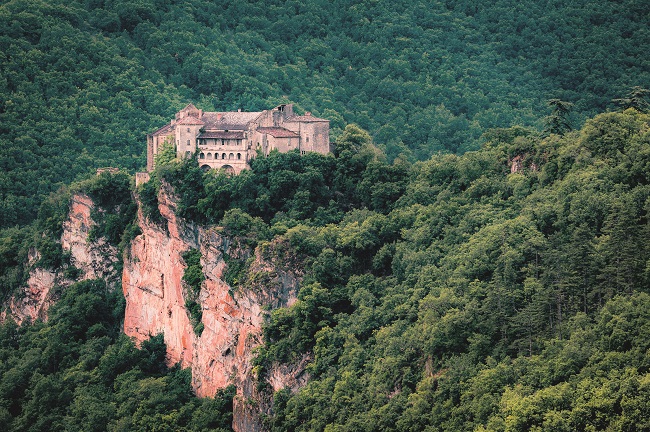
With restful, rural breaks in France very much the travel trend for 2023, head to the Tarn-et-Garonne countryside where the pace is slow, the views are sublime and the food is superb

Find peace and quiet in the Abbaye de Beaulieu-en-Rouergue © ADT82
What better place to kick off a ‘slow holiday’ exploration of the western side of Occitanie in Tarn-et-Garonne – the department due north of Toulouse – than at the stunningly restored Abbaye de Beaulieu-en-Rouergue, a Cistercian abbey founded in 1144 by the Bishop of Rodez, nestled in a wooded nook alongside the River Seye?
On a crisp Saturday morning in early spring, I soon discover that the abbey in the commune of Ginals is perfectly named – Beaulieu means ‘beautiful place’. If it’s quiet introspection you need, it’s available here in gentle abundance – as you explore the spruced-up Gothic architecture and upgrades from the 17th and 18th centuries, informative, interactive panels and screens depict the monks’ daily life of contemplation and activity, at turns introspective (prayer) and productive. The latter mainly meant gardening – the crafty monks cleverly diverted the Seye’s course, to provide water for the monastery and grounds – and today those grounds boast some 1,000 rose bushes, planted amongst perennials to honour the late Master Rosarian, André Eve and Geneviève Bonnefoi (see below).
But there’s much more to the abbey: now under the Centre des Monuments Nationaux (CMN) umbrella of prized public buildings, following substantial work to transform it into a major cultural centre, it houses an extensive collection of post-war French art, generously bequeathed to the state by collectors Pierre Brache and Geneviève Bonnefoi, along with the building itself, which they’d purchased in the 1950s.
Bonnefoi passed away in 2018, at which point the last of the couple’s 1,300 amassed works moved to CMN ownership, and entire rooms on the first floor are devoted to the likes of Hungarian-born Simon Hantaï and Jean Dubuffet. In short, the abbey has become Occitanie’s go-to modern art destination for 2023, a sublime amalgamation of ancient stone walls that talk, and prized modern art.
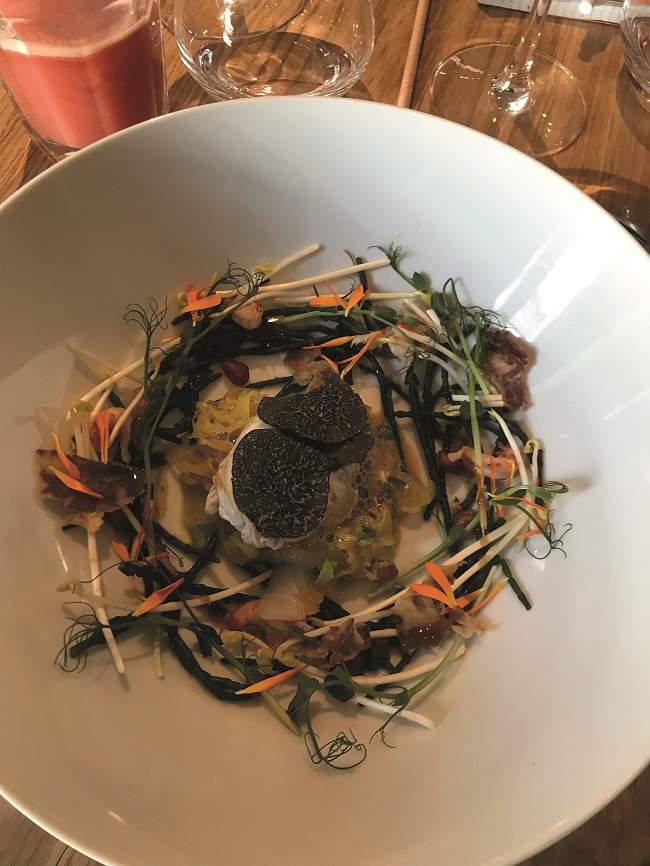
Deliciously slow lunch at Les Sens restaurant in Puylaroque © Justin Postlethwaite
Continuing the ‘slow’ theme, I follow some up-hill, down-dale, tree-lined winding roads (D33-D84-D20) for half an hour towards my lunch destination, Les Sens, in another perched gem, Puylaroque. Here things remained beautifully slow-paced, as they need to when the menu dégustation is presented dish-by-dish over about three hours! Chef Thierry Pszonka is a Maître Cuisinier de France, a committed organic chef with his own potager (vegetable garden) to draw upon, and he is clearly a passionate advocate of local produce (this tasting menu is liberally sprinkled with local Quercy ‘black gold’, the truffle).
Each course is a wild ride of invention and technical skill, paired cleverly with local wines (more of which later). I especially loved the duck and mushroom combination and his zingy, pretty-as-a-picture take on a fruit salad to close the meal. The super-relaxed atmosphere is largely down to the excellent table service and what appeared to my eyes to be a (packed) room full with repeat diners, all clearly on to something good.
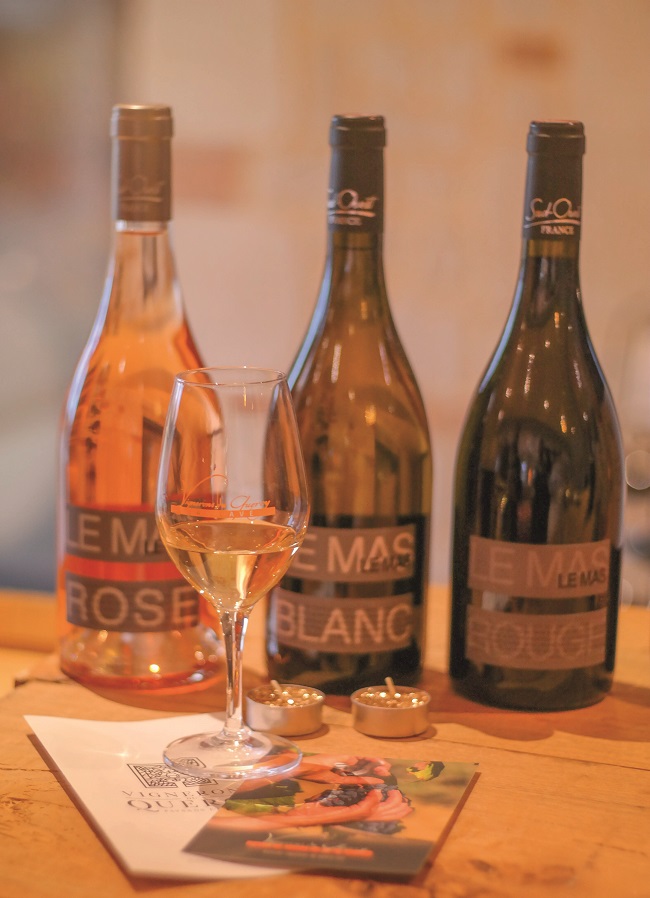
Be sure to sample some local Quercy wines © Elgiroscopo viajero
Nature’s slow-grown bounty
Normally after a lengthy lunch, all one craves is a hammock and forty winks but Les Sens’ cuisine was light and elegant, so there was no excuse for missing my next appointment – hardly a hardship: wine-tasting with the local wine-producing collective, Les Vignerons du Quercy. It is situated on the outskirts of the cute village of Montpezat-de-Quercy, which is lined with colombage (wood and stone façade) charmers and home to a collegiate church, built in the 14th century in
the Gothic style. (I remind myself to explore two other recommended villages, Montjoi and Lafrançaise, another time.) Back to the wine: four co-operatives supply the grapes gathered from 24 families of growers, to be painstakingly, lovingly fermented into reds, whites or rosés in 90 giant cuves (vats) ranging from 50 to 500 hectolitres in size. The flagship AOP Coteaux du Quercy features Cabernet Franc as the main cépage, blended variously with Tannat, Malbec and Merlot grapes. Inelegantly eschewing the spittoon, I heartily sup their classic lighter ‘630’ red, ideal as an apéro, and then select their powerful Le Mas red – great to drink now but also a keeper for up to 15 years – as my favourite.
The grape is just one of nature’s slow-grown bounties that Tarn-et-Garonne generously offers both locals and visitors. Juicy, perfumed Melons du Quercy boast an IGP (Indication Géographique Protégée) label, while in spring the paysages are dotted with cherry trees in blossom – these will later yield fine Moissac cherries – with exceptional varieties of strawberry to enjoy too, Gariguettes, Cléry and Mara des bois among them. The department grows no fewer than 50 types of apple, and come September, everyone craves the extraordinarily delicious eating grapes, AOP-labelled Le Chasselas de Moissac. Then there are apricots, peaches, kiwis… the list of fine fruits is endless.
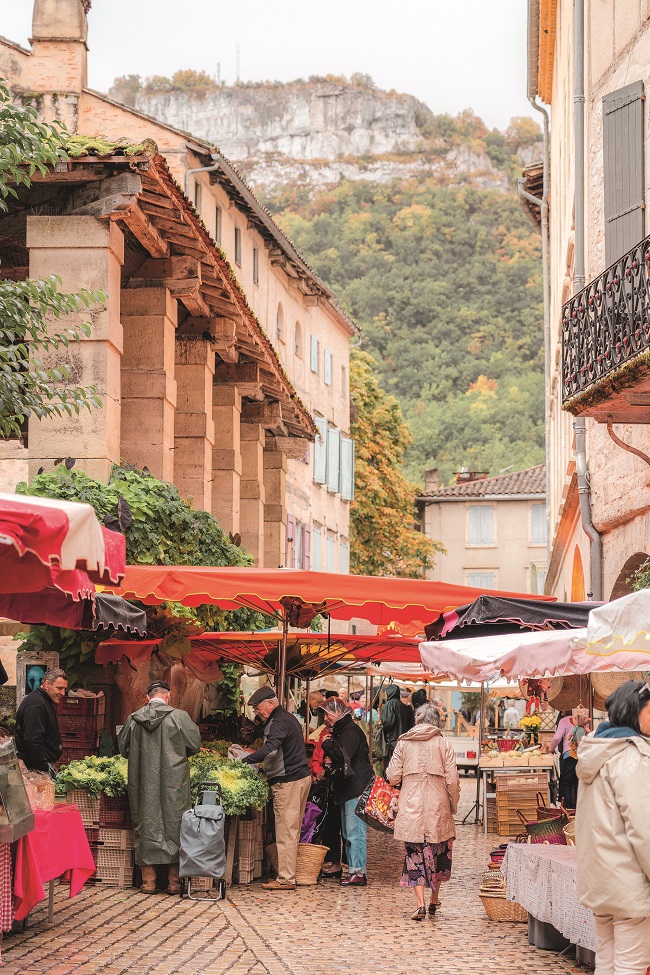
Market day in Saint Antonin Noble Val © LezBroz
Plus beau, take it slow
Next day is Sunday and that means one thing: market day. And one market trumps them all: medieval charmer Saint-Antonin-Noble-Val, sat snug in a gorge of the Aveyron River. It’s all you could want from a French market: lively and good-natured, with rows of stalls snaking through narrow streets, emerging onto placettes, proferring not just the best seasonal fruit and veg, but also a rich array of producteur goodies such as saucisson, goat’s cheese and local sweet specialities, plus more hip offerings from young torrefacteurs (coffee roasters) and the like. This market is a treat for all the senses.
For lunch on warm days, snaffle some picnic goodies and head riverside, or do as I did on this chilly day – retreat to L’Auberge des Sens on the main road along the river, to be regaled with a super €35 Sunday lunch menu of langoustine ravioli, followed by fillet steak and a chocolate pudding with vanilla ice cream.

Stroll the streets of Bruniquel © LezBroz
After lunch, from Saint-Antonin I shadowed the ribboning Aveyron in a northeasterly direction on the D115, past signs for historic perched village Penne, and took the turning up to the vertiginous village of Bruniquel, one of Tarn-et-Garonne’s Plus Beaux Villages – the prestigious label given to certain rural outposts blessed with both aesthetic and historic appeal as well as a minimum standard for visitors in terms of facilities such as parking. Bruniquel is one of three Plus Beaux Villages to be found in Tarn-et-Garonne, the others being Auvillar, which overlooks the Garonne river valley and boasts a sublime triangular main place and an iconic circular grain hall; and the very easy-on-the-eye medieval bastide, Lauzerte.
Strikingly set in this land of forests and caves, the cloud-splitting perched beauty Bruniquel is well known by many French cinema fans as being the atmospheric location for Le Vieux Fusil (called The Old Gun in English), a classic war film (pretty brutal, no happy ending) made by Claude Sautet in 1975 and starring legendary actors Philippe Noiret and Romy Schneider. The village is not so much a location, as one of the key players in the film, as its side-streets, bridges, gardens and iconic châteaux play such a key role in the main character’s fate.
It is the tale of a surgeon (Noiret) who secretes his wife (Schneider) and daughter away from the Nazis in 1944 in the family castle after the Germans have entered nearby Montauban (capital of Tarn-et-Garonne). But when he goes to see them a week later, he discovers that the Nazis have herded all the locals into the church (the tale echoes the tragic Oradour-sur-Glane massacre) and his family have been killed. He seeks vengeance with the titular ‘Old Gun’ he used for hunting as a child and aims to pick off the Nazis one by one, using his knowledge of the castle and village streets to lay traps, hide out and wreak his revenge. Thankfully, the only danger one faces these days in Bruniquel is being caught up in a battle of toddlers as they play at medieval chevaliers, clashing swords and shields bought from one of the village’s memento shops.
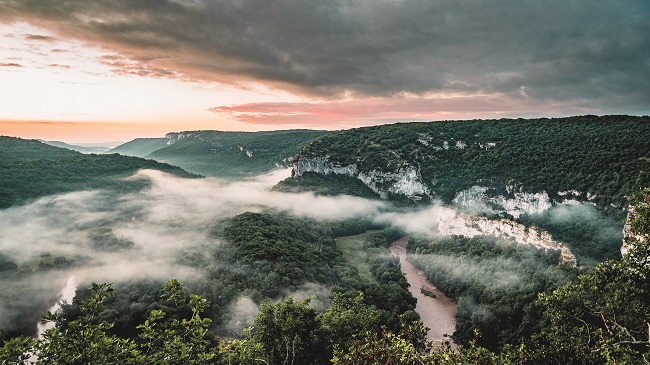
The gorgeous gorges of Tarn-et-Garonne © Lez Broz
The joy of Bruniquel lies not merely in its lofty location and its two distinct, cliff-clinging châteaux (one from the 12th/13th century, the other from the 15th century; both visible from the valley below) but its quaint streets and stunning medieval façades. The steepish yomp up to the castles (mind those steps!) is not for the faint of heart but the rewards are rich – and what’s the hurry anyway? Drink in the historical ambience and fine views over the verdant valley below, as well as two permanent exhibitions, one on the shooting of Le Vieux Fusil, the other on stone and sculpture with a little prehistoric context of the surrounding area thrown in for good measure.
A gentle stroll around stunning, lofty Bruniquel is a perfect way to conclude a slow, relaxing exploration of Tarn-et-Garonne.
- How to get there:
Fly to Toulouse-Blagnac airport from various UK airports. The capital of Tarn-et Garonne, Montauban, is around 50 minutes due north on the A62. For Saint-Antonin-Noble-Val from there, take the D115/D958.
For more information, visit tourisme-tarnetgaronne.fr and south-west.tourism-occitanie.co.uk
From France Today magazine
Lead photo credit : Gravity-defying Bruniquel catsle ©LezBroz
Share to: Facebook Twitter LinkedIn Email
More in French countryside, French villages, occitanie, Plus Beaux Villages, slow travel, tarn-et-garonne
Leave a reply
Your email address will not be published. Required fields are marked *




REPLY